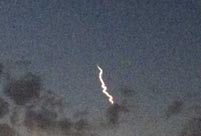

On February 11, Britain and the United States released two reports on China's military development which were almost simultaneous.
One is The Military Balance 2015 Report by the British International Institute for Strategic Studies and the other is China’s Incomplete Military Transformation: Assessing the Weaknesses of the People’s Liberation Army produced by the International Security and Defence Policy Centre of the Rand National Security Research Division.
The former claims that in recent years China has entered a new era of mass production of military naval vessels, and China's military spending has seen a significant increase that lacks transparency. China's defense spending continues to grow at a higher rate than its neighbors. In 2010, China's military spending accounted for about 28 percent of Asia's total military spending and in 2014 its share increased to about 38 percent, according to the report.
The latter looks at two critical shortcomings: institutional and combat capabilities. On institutional issues, the PLA faces shortcomings regarding outdated command structures, quality of personnel, professionalism and corruption. Combat weaknesses include logistics, insufficient strategic airlift capabilities, limited numbers of special-mission aircraft, and deficiencies in fleet air defense and anti-submarine warfare.
Why do the two Western think tanks draw such contradictory conclusions on China's army?
Obviously, these two reports are not a true or objective judgment by the Western countries on China's national defense and military development.
In recent years, Western countries have published many military reports on China, but mostly for political purposes. Many reports on China's military power are based on publications and even online rumors, and their credibility is not high. They regularly distort the facts for political ends.
When hyping up the Chinese military threat, they exaggerate the advantages and combat capability of the PLA equipment, while they try to play down China's military capability when they need to talk up their allies.
In fact, China always keeps control over national defense expenditure and maintains the principle of coordinated development of national defense and the economy. In 2014, China’s spending on defense accounted for less than 1.5 percent of GDP, not only lower than the major western powers, but also lower than the world average of 2.6 percent. The annual defense budget is included in the draft budget report submitted to the National People's Congress for review, and the process is open and transparent. Information, including the total budget and its composition, is also open and transparent.
China firmly adheres to a path of peaceful development and its national defense policy is of a defensive nature. Development of China's defense forces is desinged to provide for maintenance of national unity, territorial integrity and development interests, and also for international and regional peace and security. China does not threaten any country.
If western countries would make an effort to follow and comment on China's national defense and military development objectively, fairly, and rationally, their reports would be more persuasive.
The author is Zhang Junshe, senior researcher at the PLA Naval Military Studies Research Institute.
This article was edited and translated from 《中国军力夸大唱衰中国军力可休矣》, source: Xinhuanet.com
 PLA soldiers operating vehicle-mounted guns in drill
PLA soldiers operating vehicle-mounted guns in drill Beauties dancing on the rings
Beauties dancing on the rings Blind carpenter in E China's Jiangxi
Blind carpenter in E China's Jiangxi Top 10 highest-paid sports teams in the world
Top 10 highest-paid sports teams in the world In photos: China's WZ-10 armed helicopters
In photos: China's WZ-10 armed helicopters UFO spotted in several places in China
UFO spotted in several places in China Certificates of land title of Qing Dynasty and Republic of China
Certificates of land title of Qing Dynasty and Republic of China  Cute young Taoist priest in Beijing
Cute young Taoist priest in Beijing New film brings Doraemon's life story to China in 3D
New film brings Doraemon's life story to China in 3D Obama is sowing discontent in S.China Sea
Obama is sowing discontent in S.China Sea Rescuers work through night to reach cruise ship survivors
Rescuers work through night to reach cruise ship survivors Driving through limbo
Driving through limbo Facing down MERS
Facing down MERSDay|Week